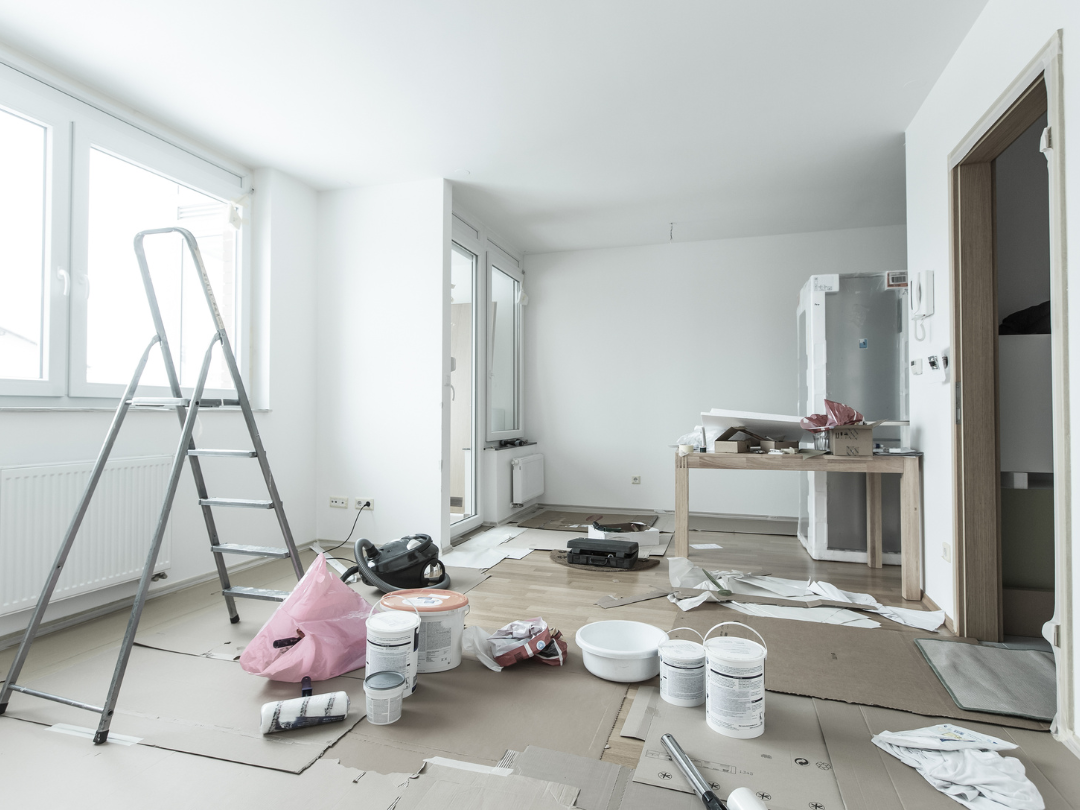Get the week's most popular posts delivered to your inbox.
Our weekly update is free yet priceless and you're less than a minute away from getting the current edition.
In the unlikely event we disappoint, you can unsubscribe with a single click!
Last Updated on October 22, 2025 by teamobn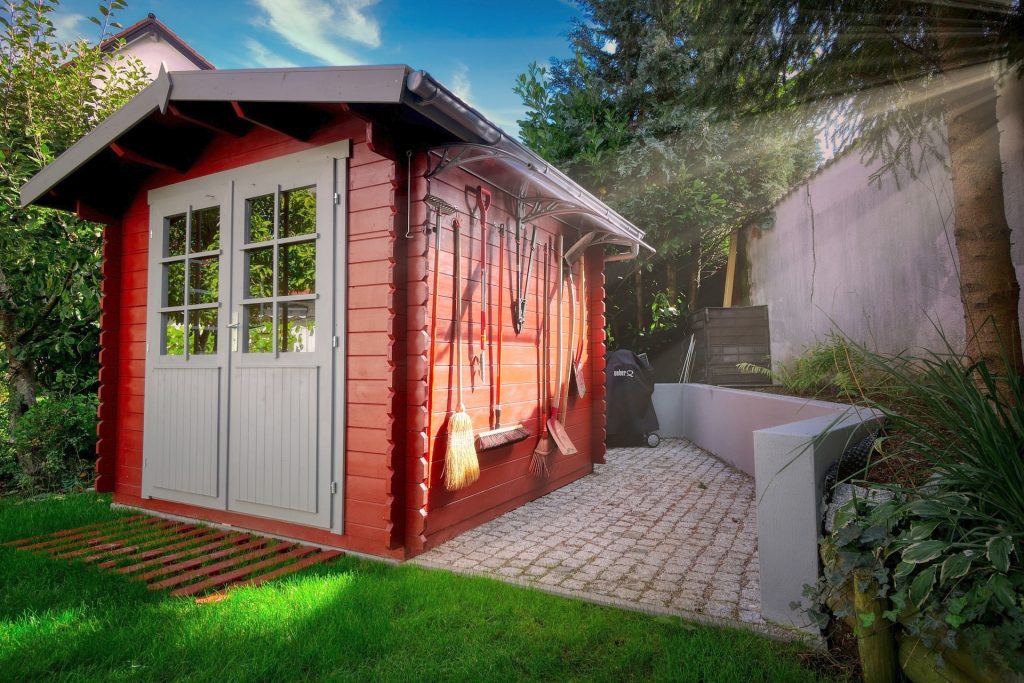
Gardening isn’t just a hobby; it’s a labour of love that demands the right tools and space. Enter the unsung hero of backyard sanctuaries – the garden shed. But wait, before you rush into acquiring your very own storage haven, there’s a significant decision to make: what material should your shed be made of?
In this showdown of the garden shed materials, we pit wood, plastic, and metal against each other to help you uncover the ultimate contender for your gardening kingdom. Embark on this captivating journey of discovery, revealing the supreme contender that seamlessly combines utility and visual charm, showcasing garden shed excellence in all its glory.
Contents
Choosing the Right Shed Materials
There are three common garden shed materials. Below is a detailed look at each of this materials to help you pick the right one.
Wood: Rustic Charm and Timeless Elegance
Picture this: a charming wooden shed nestled amidst your blossoming garden, exuding rustic allure that feels like a storybook escape. Wood isn’t just a material; it’s a journey back in time, a tribute to craftsmanship.
Beyond its aesthetic appeal, wood brings natural insulation and breathability, making it an ideal cozy hideaway for your precious plants and tools. It’s a classic choice, rooted in tradition and ready to weather the seasons with grace.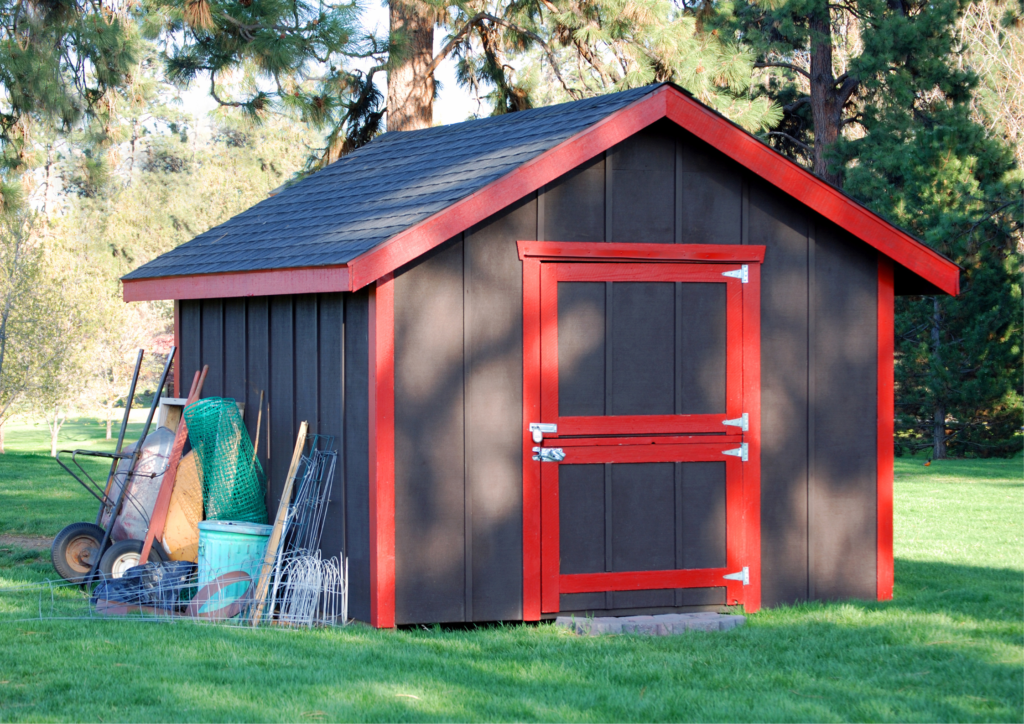
Wooden sheds can be easily customized, painted, and stained to match your preferences. They are also relatively easy to work with if you plan to do any modifications or additions.
However, wooden sheds require regular maintenance to protect against rot, insects, and weather damage. You’ll need to apply sealants, paints, and wood treatments to ensure its longevity. Additionally, wood can be susceptible to warping or splitting over time.
With appropriate upkeep, wood also exhibits durability and can endure over extended periods. For instance, kitset garden sheds crafted from premium timber are recognized for their robust and dependable construction. Consistent maintenance, including the application of sealants and treatments, serves to bolster the shed’s ability to withstand weather forces and prevent decay.
Plastic: Modern Marvel of Durability and Convenience
Now, dive into the future with plastic garden sheds – the embodiment of modernity and practicality. These lightweight wonders are virtually maintenance-free, a dream for those seeking a hassle-free garden storage solution. 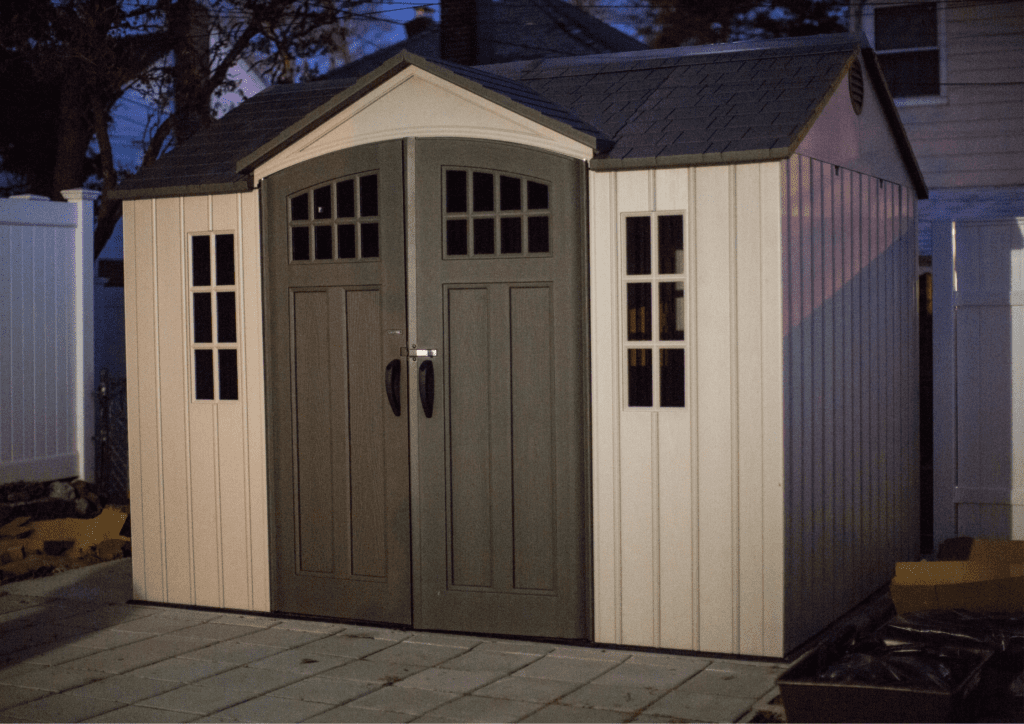
Whether it’s rain, shine, or a surprise snowstorm, plastic garden sheds stand strong, offering robust durability that gives you more time for planting and pruning. Quick assembly, sleek designs, and easy cleaning make plastic a contender that refuses to be overlooked.
Plastic garden sheds, made from materials like resin or vinyl, are known for their durability and low maintenance requirements. They are immune to rot, rust, and insect damage, making them a great choice for those who want a hassle-free option. Plastic garden sheds are also relatively lightweight.
However, plastic garden sheds might not offer the same visual appeal as wooden garden sheds, and their design options might be more limited. These sheds can also be less sturdy than wood or metal garden sheds, especially in regions with extreme weather conditions.
Metal: Industrial Strength and Contemporary Cool
Say hello to the industrial masterpiece – the metal garden shed. If you’re a fan of clean lines and contemporary aesthetics, metal might be your muse. These sturdy structures are built to withstand the test of time and elements, offering a secure haven for your tools and plants. 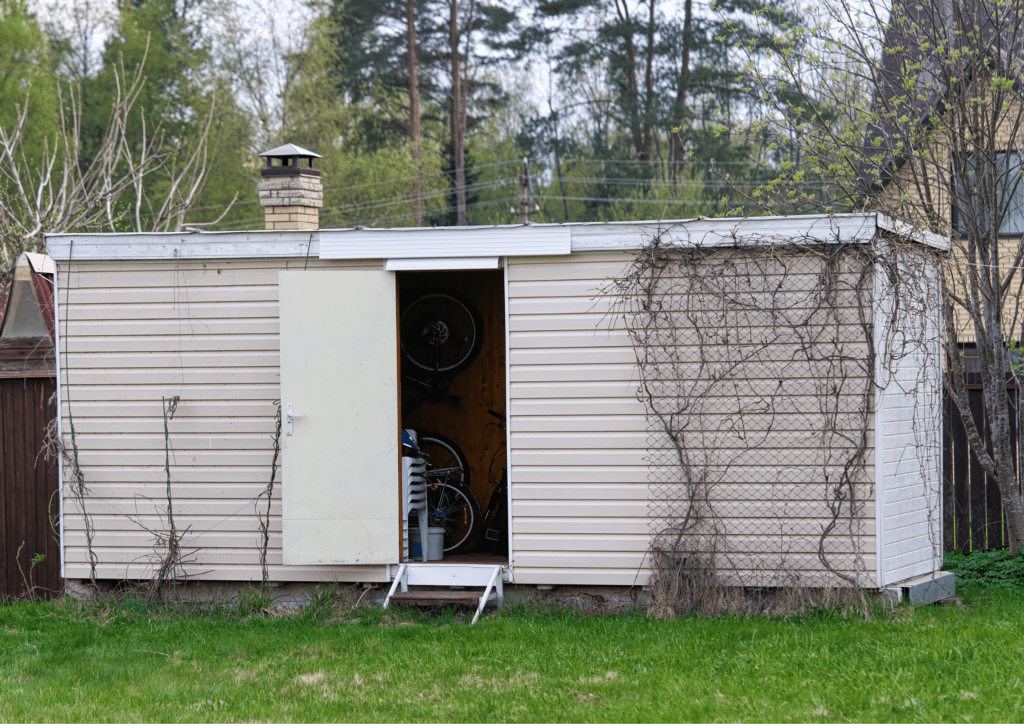
The bonus? Metal sheds don’t attract pests and require minimal maintenance, freeing up your schedule for the things that truly matter – nurturing your garden paradise.
Metal sheds, typically made from steel or aluminium, provide strong structural integrity and security. They are resistant to rot, insect damage, and fire. Metal sheds are also often favored for their long lifespan and low maintenance requirements. They can also provide excellent protection for tools and equipment.
On the downside, metal sheds can be prone to rust, especially if not properly coated or maintained. They may not have the same visual appeal as inspiring garden sheds made of wood, and condensation may be a concern within metal constructions.
The Best Garden Shed Material
The best material for a garden shed depends on your priorities:
- If you value a traditional and customizable look and are willing to invest time in maintenance, wood might be a good choice.
- If you want a low-maintenance option that is resistant to decay and insects, plastic sheds could be suitable.
- If contemporary aesthetics, durability, and minimal maintenance are your priorities, a metal shed might be the right fit.
Your decision should be based on factors such as your budget, local climate, desired appeal, and the specific purpose of the shed. By thoughtfully weighing these elements, you’ll be able to confidently select the material that not only meets your practical needs but also brings your garden shed aspirations to life.
Climate Considerations When Choosing Shed Materials
Choosing the right shed material goes beyond looks and cost. It also has a lot to do with the climate in your area. Different weather conditions can dramatically affect the durability, performance, and maintenance needs of your shed.
Hot and Dry Climates
If you live in a region with hot, dry summers, plastic sheds can be a practical choice. Plastic resists cracking and splitting that extreme dryness can cause in wood. It also won’t warp the way timber often does under intense sun. However, not all plastic sheds are created equal. Look for UV-resistant materials that won’t fade or become brittle after a few years of sun exposure. Metal sheds also work well in dry conditions but need proper ventilation to avoid becoming unbearably hot inside.
Wood is still an option in dry climates but needs extra attention. You will need to seal it well and regularly maintain it. Otherwise, it may dry out and split over time.
Cold and Snowy Winters
In regions with heavy snow and freezing temperatures, the shed material you choose must handle weight and moisture. Metal sheds are strong but can suffer from condensation inside, leading to rust. Choosing a galvanized steel shed with an anti-corrosion coating will help. You will also want to insulate it or at least add a vapor barrier.
Wooden sheds perform well in cold climates when built properly. They naturally provide some insulation. Heavy snow can put stress on any roof, so a steeply pitched roof on your wooden shed will help it shed snow faster. Plastic sheds can work in snowy areas too, but lightweight models might struggle under a heavy load. Reinforced roof designs are a safer bet if you expect lots of snow.
Wet and Humid Regions
If you live in a coastal area or a place with frequent rain and high humidity, the shed material must resist moisture. Plastic sheds are usually the safest choice for wet climates. They won’t rot, rust, or attract mold. Their maintenance-free nature is a major advantage when dealing with persistent dampness.
Metal sheds need careful treatment to survive in coastal regions. Salt air can cause rapid corrosion if the metal isn’t properly coated. Regular inspection and maintenance are necessary to protect the structure. Wooden sheds in humid areas will require high-quality treated timber. They must be sealed and painted regularly to prevent mold, rot, and insect infestation.
Windy and Storm-Prone Areas
In places prone to high winds, hurricanes, or storms, stability becomes the top priority. The shed material must offer strength and secure anchoring. Metal sheds, particularly those made of heavy-gauge steel, can offer strong resistance when properly bolted down. Wooden sheds also perform well if built with thick framing and hurricane ties.
Plastic sheds are generally lightweight. Without additional anchoring systems, they may not hold up well during powerful storms. If you choose a plastic shed, make sure it has anchoring options to increase its stability.
Climate plays a huge role in how well your shed will age and perform. Taking the time to match your shed material to your local weather will save you from constant repairs and early replacements. Whether you deal with heat, snow, rain, or wind, there’s a shed material that fits your climate and supports your gardening needs.
Shed Material Longevity: How Long Will It Last?
When choosing a garden shed, looks and price matter. But it’s also important to think about how long the shed material will last. The right choice will give you decades of reliable use. The wrong one could leave you replacing or repairing much sooner than expected.
Wood Shed Longevity
A wood shed offers timeless beauty and natural insulation. If properly maintained, it can last 20 to 30 years or even longer. The key to wood’s longevity is maintenance. You need to apply sealants, stain, or paint every few years. Protecting the shed from moisture, insects, and harsh sun will prevent rot and warping.
Pressure-treated wood or naturally resistant species like cedar and redwood give better results. However, if left untreated or neglected, wood sheds can show signs of decay in as little as 5 to 10 years.
A wood shed also benefits from having a raised foundation. Keeping the base off damp ground extends its life. Regular inspection for termites and applying protective coatings make all the difference in keeping your investment in top shape.
Plastic Shed Longevity
Plastic sheds are known for being a low-maintenance option. Made from resin, vinyl, or polyethylene, these sheds can last 15 to 20 years with minimal care. High-quality plastic sheds resist UV damage, warping, and moisture problems. You won’t need to worry about rust, rot, or insect infestation.
One thing to keep in mind is that not all plastic sheds are created equal. Cheaper models without UV protection may fade, crack, or become brittle after prolonged sun exposure. In extreme climates, plastic sheds may experience slight structural weakness over time. Keeping them clean and occasionally checking for cracks will help maintain their strength.
Plastic is an excellent shed material for homeowners who want something that stands up to the elements without a lot of effort.
Metal Shed Longevity
Metal sheds, particularly those made from galvanized steel or aluminum, offer impressive longevity. A high-quality metal shed can easily last 25 to 30 years with proper maintenance. Some heavy-duty models even stretch beyond that. They are resistant to pests, fire, and general wear and tear.
The main threat to a metal shed is corrosion. If the protective coating wears off or if water finds a way in, rust can take hold. Areas with high humidity or salty coastal air speed up corrosion. Painting, sealing joints, and applying anti-rust treatments will protect the structure for the long haul.
Proper ventilation inside a metal shed also reduces condensation, which helps preserve both the frame and anything stored inside.
Each shed material has its strengths when it comes to longevity. Wood offers beauty and a classic look but demands regular care. Plastic sheds simplify maintenance and perform well in many climates. Metal sheds provide industrial-grade durability with the right protection. By choosing the right shed material and maintaining it well, you can expect decades of reliable storage and enjoyment from your garden shed.
Summary
Remember that the choice of material isn’t just about construction; it’s about crafting an extension of your gardening persona.
Will you opt for the timeless elegance of wood, the modern convenience of plastic, or the sleek industrial cool of metal? Each contender brings unique qualities to the table, allowing you to tailor your choice to match your gardening dreams.
Wood, with its classic grandeur, whispers of heritage and craftsmanship, while plastic opens doors to effortless organization and functional finesse. On the other hand, metal stands as a testament to sleek resilience, encapsulating the spirit of innovation within its metallic embrace.
Your decision will craft the backdrop against which your aspirations will flourish. In this showdown of garden shed materials, there’s no wrong answer – just a garden full of possibilities waiting for you to uncover.
So, take your time, weigh the options, and let the material you choose become the framework for your blossoming masterpiece.
Your garden shed isn’t just a structure; it’s a reflection of your gardening journey, an oasis where seeds of imagination sprout into a lush reality. The choice is yours – which material will win your gardening heart?
Get the week's most popular posts delivered to your inbox.
Our weekly update is free yet priceless and you're less than a minute away from getting the current edition.
In the unlikely event we disappoint, you can unsubscribe with a single click!




